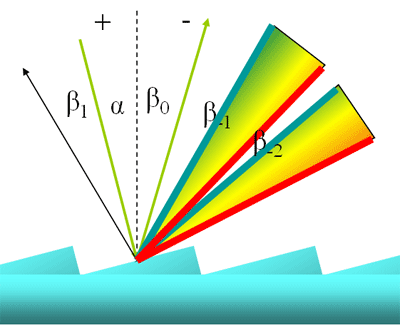| Stray Light and Second Order Effects |
Stray light is radiation of the wrong wavelength that activates a signal at a detector element. 
Sources of stray light can be:
- ambient light;
- scattering light from imperfect optical components or reflections of non-optical components;
- order overlap.

Encasing the spectrometer in a light tight housing eliminates ambient stray light. When working at the detection limit of the spectrometer system, the stray light level from the optical bench, grating and focusing mirrors will determine the ultimate limit of detection. 
Second order effects, which can play an important role for gratings with low groove frequency and therefore a wide wavelength range, are usually caused by the grating 2nd order diffracted beam.
The effects of these higher orders can often be ignored, but sometimes need to be taken care of.
The strategy is to limit the light to the region of the spectra, where order overlap is not possible. 
|
 |

 |
Second order effects can be filtered out, using a permanently installed long-pass optical filter in the SMA entrance connector or an order sorting coating on a window in front of the detector. 
|

|
